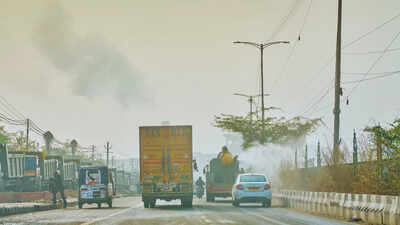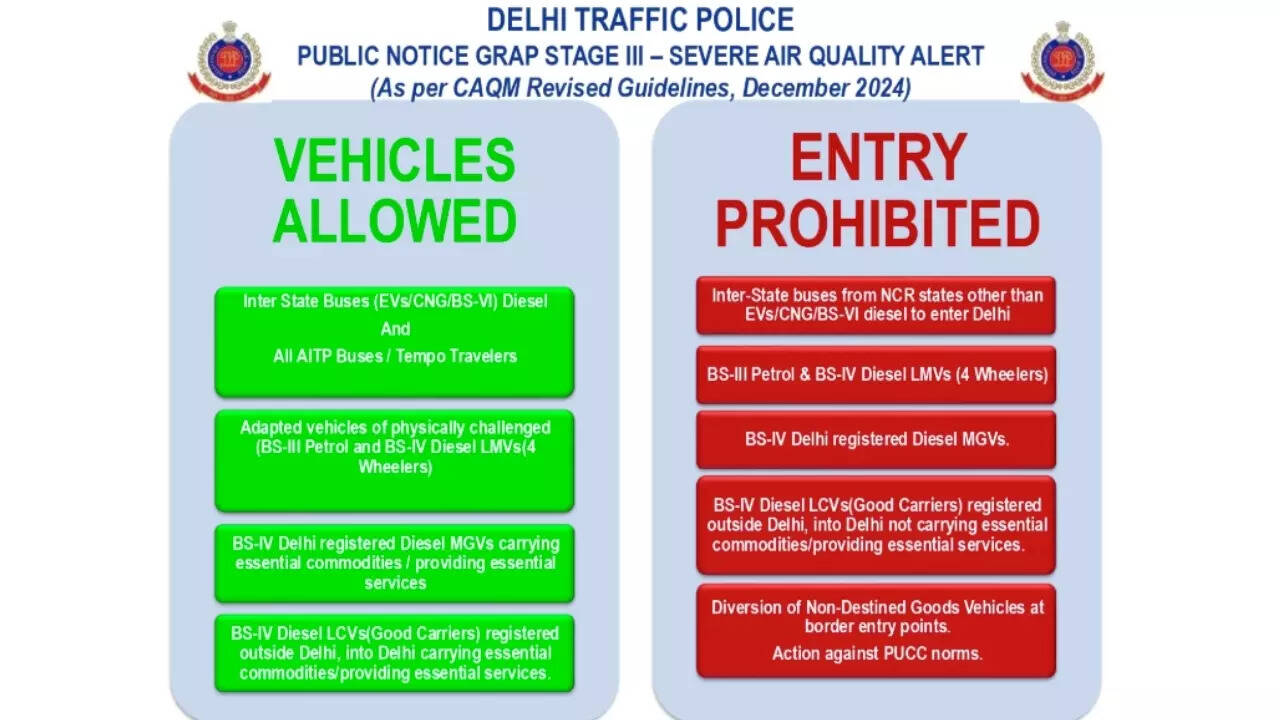ARTICLE AD BOX

As the air quality in Delhi-NCR plunged into the ‘Severe’ category for the first time this season, the Commission for Air Quality Management (CAQM) on Tuesday invoked Stage 3 of the Graded Response Action Plan (GRAP). The move came after the city’s average Air Quality Index (AQI) soared to 425, reflecting the deepening pollution crisis that typically grips the region during the onset of winter.According to data from the Central Pollution Control Board (CPCB), pollution levels across major monitoring stations in Delhi breached alarming limits. Anand Vihar recorded an AQI of 412, Alipur reported 442, and Bawana topped the list with a dangerous 462. Chandni Chowk logged 416, while RK Puram and Patparganj recorded 446 and 438, respectively. An AQI above 400 falls under the ‘Severe’ category, indicating hazardous air quality that poses serious health risks, even for healthy individuals.
Sensitive groups, such as children, the elderly, and those with respiratory conditions, face greater vulnerability during such pollution spikes.Air quality experts caution that the situation remains critical, especially during the high-pollution months of October and November when meteorological conditions trap pollutants near the ground.
What is GRAP?
The Graded Response Action Plan (GRAP) is a structured policy framework implemented in Delhi-NCR to tackle air pollution through a tiered response system.
Introduced under the direction of the Supreme Court and managed by CAQM, GRAP prescribes specific interventions based on real-time air quality data.
The plan comprises four stages of escalating severity:
- Stage 1 (Poor): AQI 201–300
- Stage 2 (Very Poor): AQI 301–400
- Stage 3 (Severe): AQI 401–450
- Stage 4 (Severe Plus): AQI above 450
Each stage triggers a set of corresponding restrictions aimed at reducing emissions from vehicular traffic, industry, construction, and road dust. With Stage 3 now in force, authorities have rolled out stringent controls to mitigate the worsening smog.

GRAP 3 orders in Delhi
Restrictions under Stage 3 of GRAP
Under the Severe category, the following measures are being implemented across Delhi-NCR:
- Ban on non-essential construction and demolition activities, including earthwork, trenching, piling, and open-air Ready-Mix Concrete (RMC) operations.
- Closure of stone crushers, mining sites, and hot-mix plants that are not operating on clean fuel.
- Prohibition on the plying of BS-3 petrol and BS-4 diesel four-wheelers in Delhi and adjoining NCR districts to cut vehicular emissions.
- Restriction on transportation of construction materials such as sand and cement, particularly on unpaved roads.
- Ban on diesel generator sets, except for emergency and essential services like hospitals, airports, and metro rail operations.
- Suspension of inter-state diesel buses entering or operating within Delhi to minimize vehicular pollution.
- Advisory for private offices to adopt work-from-home or hybrid models to reduce commuter traffic.
- Closure of schools up to Class 5, shifting lessons to online mode to safeguard young children from exposure to toxic air.

Delhi Traffic Police notice for GRAP 3
What’s exempted under GRAP-3
While restrictions are widespread, certain essential activities are exempted to ensure the functioning of critical infrastructure.
Public projects related to railways, metro rail, airports, defence, sanitation, and healthcare are permitted to continue under strict dust control and waste management guidelines.The CAQM and state pollution control boards are maintaining continuous surveillance of air quality levels and implementation progress. If pollution levels cross an AQI of 450 and remain there for 48 hours, Stage 4 measures, such as bans on truck entry (except essential goods), suspension of industrial operations, and temporary school closures, could be imposed.Health experts have urged residents to minimise outdoor exposure, particularly during early morning and late evening hours when pollutant concentration is highest. They recommend wearing N95 or equivalent masks, using air purifiers indoors, and maintaining adequate hydration to mitigate the effects of air pollution.This year, it is said that there has been a decline in stubble burning incidents in neighbouring Punjab and Haryana. While the decline in stubble burning is a welcome sign, experts believe that long-term structural reforms, including clean energy adoption, improved waste management, and sustainable urban transport, are essential to achieve lasting change.

 1 hour ago
5
1 hour ago
5








 English (US) ·
English (US) ·